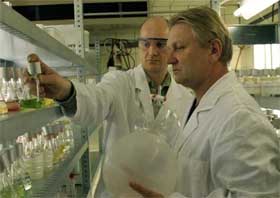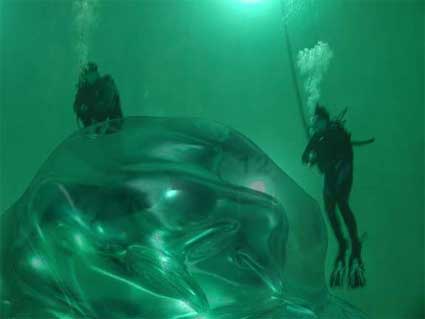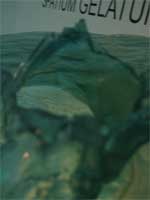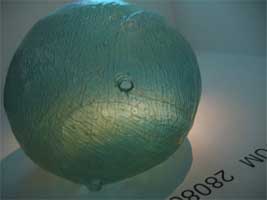 Slowly coming back to the ars electronica postings with some notes from a talk by Zbigniew Oksiuta, one of the prize winners of the new Hybrid Art category and someone i was really looking forward to hearing. The Polish architect, artist, and researcher is now based in Germany where he works in collaboration with the Max Planck Institute and the University of Cologne. Oksiuta is probably one of the most interesting figures in the world of architecture, biology and biochemistry and he was as passionate and smart as i had imagined.
Slowly coming back to the ars electronica postings with some notes from a talk by Zbigniew Oksiuta, one of the prize winners of the new Hybrid Art category and someone i was really looking forward to hearing. The Polish architect, artist, and researcher is now based in Germany where he works in collaboration with the Max Planck Institute and the University of Cologne. Oksiuta is probably one of the most interesting figures in the world of architecture, biology and biochemistry and he was as passionate and smart as i had imagined.
Oksiuta has been working for ten years on the possibility to create a new breed of biological habitat which would organically and dynamically adapt to conditions such as the absence of gravity that one might have to face both in the biosphere and in space. While architecture evokes ideas of stability and immobility, he envisions the possibility of making it living and unstable. Vegetable matter could become a live habitat, an isolated spatial entity that takes up, transforms, and synthesizes matter and energy from its surroundings by biological means.
The construction materials he works with are algae and gelatin. With traditional architecture, one has to assemble forms engineered by machines and this creates a big structure. In Oksiuta’s system everything would grow at once, like biological systems. The dynamic systems would react to the external environment, communicate information and transfer energy through liquid medium.
 Mesogloea 2003. Inflation of the hollows in a polymer lump floating under water
Mesogloea 2003. Inflation of the hollows in a polymer lump floating under water
One of the challenges he encountered while working with liquid materials to grow his bio structures was the evaporation of water that’s one of the reasons why he resorted to building them under the water, using neutral buoyancy (isopycnic systems). Besides the water process gives an idea of what it is like to built spacial forms for weightless conditions.
The next step is breeding the structures in petri dishes. Not plastic petri dish but membranes which work both as barriers that protects and separates from the outside and as part of the structure itself.

 Spatium Gelatium 280807
Spatium Gelatium 280807
His Biological Habitat: Breeding Spaces Technology, Made in Space project was exhibited at the OK Centrum, Linz. The system would use DNA as cosmic universal code: strands of DNA embedded in bioreactors are to develop autonomously into new forms of life in the biosphere and in outer space.
Both the environment and physical laws determine forms of life to the extent that their “experience� over the course of evolution is implemented in the strands of DNA. In the embryonic state, however, life emancipates itself from these guidelines and prescriptions. This is what the biological habitat uses; it provides a biotope that is not determined by gravitation and physical laws on Earth but rather by conditions in outer space. Therefore, biological forms of life also develop differently here and —similar to life on Earth— reproduce themselves over the course of an evolutionary process.
Two first images: Wojtek Kozak.
